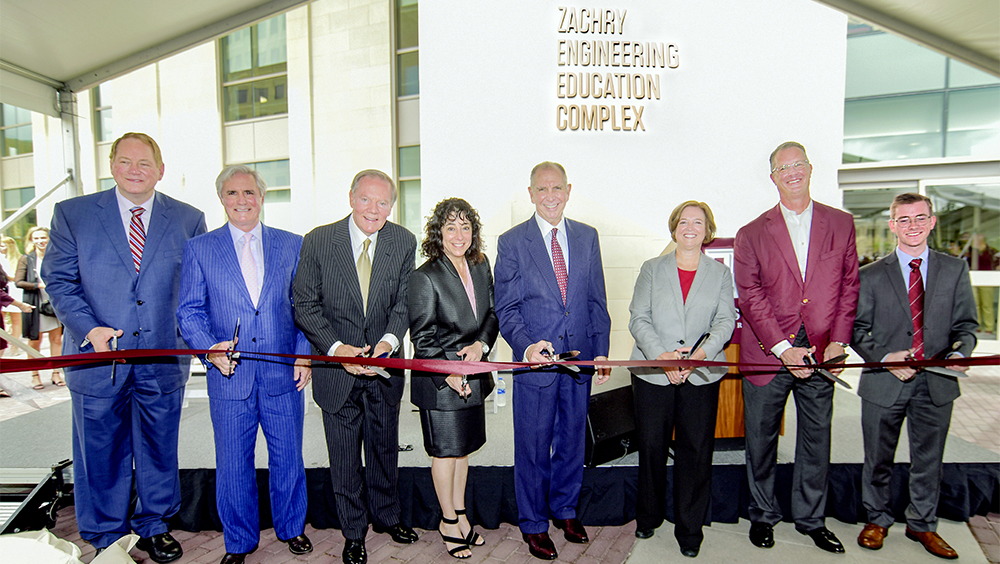
On Friday, Sept. 7, hundreds of guests gathered on the newly constructed E-Quad to celebrate the official dedication of the largest academic building on the Texas A&M University campus — the Zachry Engineering Education Complex (ZACH). Forty-six years after the original Zachry Engineering Building opened its doors, current and former students, as well as donors and other dignitaries, braved the Texas heat to celebrate the future and honor the past of engineering at Texas A&M.
Located at the intersection of University Drive and Bizzell Street, the Zachry Engineering Education Complex is unlike any other facility in the nation. The 525,000-square-foot complex (which is 200,000 square feet larger than its predecessor) is set to revolutionize the way the College of Engineering delivers education to undergraduate students with its student-centered design and modern learning techniques and technology.
“One of the most important aspects of this building is that all of the engineering disciplines are located together,” said M. Katherine Banks, vice chancellor of engineering and national laboratories for The Texas A&M University System and dean of engineering for Texas A&M. “This allows for connections between the different types of engineers, who are necessary to solve many of our technical challenges.” Not only is the new Zachry building the largest academic building on campus, the funding campaign for the building generated the most support for any academic building on the university’s campus: more than $75 million.
One of the first donations came from engineering students. “I am grateful to the amazing student body of the Texas A&M College of Engineering,” said Reed Hampton, president of the Student Engineers’ Council (SEC) at Texas A&M. “Without the support of each of those intelligent, impassioned and innovative Aggies, not only would the SEC have no student body to represent, but we would not have been able to make our donation on their behalf.”
Since students were among the first donors to the building, it’s fitting that they were also among the first to set foot in the new building during an open house on Aug. 27 before classes began. "I’m already proud to be an engineer at Texas A&M, but seeing this building, that pride just skyrockets. I’m going to spend all of my time here,” said Lanise Williams '20, an industrial and systems engineering student.
Kennon
The new Zachry building has no lecture
Educational technology and more activity-based learning are key elements to future engineering classrooms. Studies have shown that active learning helps students retain information better and enhances their educational experience, so the College of Engineering embraced active learning as part of its goal to transform engineering education and promote collaboration.
Another feature of Zachry that may surprise visitors and students alike is the engineering art collection. A university committee selected 10 visionary artists from more than 100 candidates to be included in the art collection within the building. These privately-funded art pieces are not just aesthetically pleasing — they are based in engineering principles and represent the intersection of creativity and innovation through art and engineering.
"It is our collective goal that the art will encourage interactivity and function as an academic tool for purposes of engaging the students, faculty and former students by inspiring exploration, innovation
Past Meets the Future
The new Zachry honors the building’s history. Inside the south
Another feature in Zachry also combines the old with the new, a digital alcove with an interactive table. The theme of the digital alcove is “Where will your Aggie Ring take you?” On
Other features of the new Zachry are state-of-the-art and designed to promote the best educational experience for undergraduate students. They include 60,000 square feet of